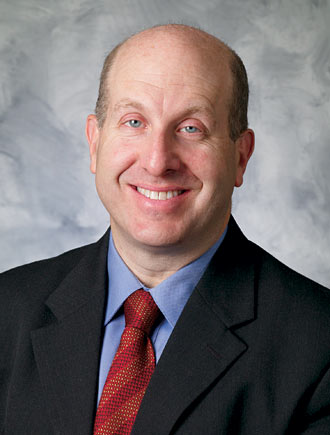Oberlin Alumni Magazine
Fall 2008 Vol. 104 No. 1
The Roots of Environmentalism
 President Marvin Krislov
President Marvin Krislov
Throughout Oberlin’s 175-year history, its people have often invested their time and resources in working for social change. That ethos can be seen today in the actions our faculty, students, parents, staff, and alumni are taking to promote environmentalism and battle climate change.
Environmentalism has deep roots here. Charles Martin Hall, inventor, cultural savant, and 1885 graduate, so loved Oberlin and the natural world that he gave us our Arboretum and provided the funds that transformed Tappan Square into a lovely, 13-acre park. Hall’s bequests also laid the groundwork for Oberlin to become the leader in environmental studies and the sciences that it is today.
As part of our 175th anniversary celebration, the College and city of Oberlin are honoring that tradition of combining beauty and sustainability by planting 175 trees. In a symbolic nod to our founders, the Rev. John J. Shipherd and Philo P. Stewart, we have planted a disease-resistant American elm on the east side of the square, about 150 yards north of the Historic Elm site. That legendary tree, which shaded the cabin of Peter Pindar Pease, Oberlin’s first settler, succumbed to disease and was cut down on April 13, 1965. We hope those plantings will maintain Oberlin’s arboreal splendor for future generations.
From my conversations with alumni, I know how important environmental issues are to the Oberlin family. This issue will inform you of the many ways the people of the College and town are working together to put sustainability into action. In September, thanks to the efforts of Associate Professor of Environmental Studies John Petersen ’88, the Great Lakes Protection Fund gave us a grant for $812,000 for our proposal Implementing Real-Time Resource Use Feedback to Motivate and Empower Conservation. This is actually $10,000 more than John requested, and will allow the College and city to significantly expand the energy resource monitoring system developed at Oberlin into the broader community. The College is also supporting a new program called Providing Oberlin with Efficiency Responsibly, or POWER, which will provide grants that help low-income residents improve the energy efficiency of their homes.
In 2006, we became one of the first American colleges or universities to commit to the goal of reducing our carbon footprint from 50,000 tons per year to zero. The College has been recognized as a national leader by numerous environmental groups, including the Sierra Club, and in a front-page New York Times article about our Student Experiment in Environmental Design, or SEED House.
We are currently studying the feasibility of an ambitious project that would create a “College and Community Green Arts District” on the east side of Tappan Square. This project would showcase our historic buildings while serving as a model of how colleges and communities can create a vibrant, sustainable, and economically viable district centered on the arts and culture.
Oberlin’s environmental efforts demand our time and resources. In keeping with Oberlin’s enduring commitment to make the world a better place, we are investing in the future of our children, our community, and our planet. By putting our values into practice, Oberlin challenges other institutions, individuals, and society to do better. Our students, faculty, staff, and alumni work hard every day to ensure that we live up to our values. That is why I am so proud of this College. I hope you are, too.
